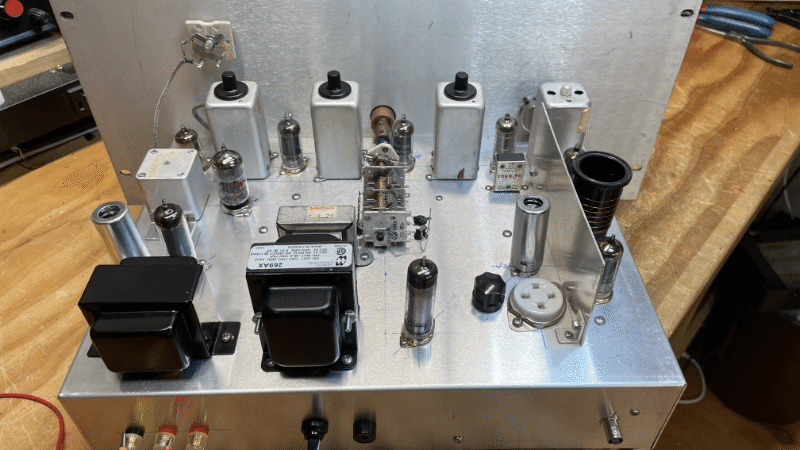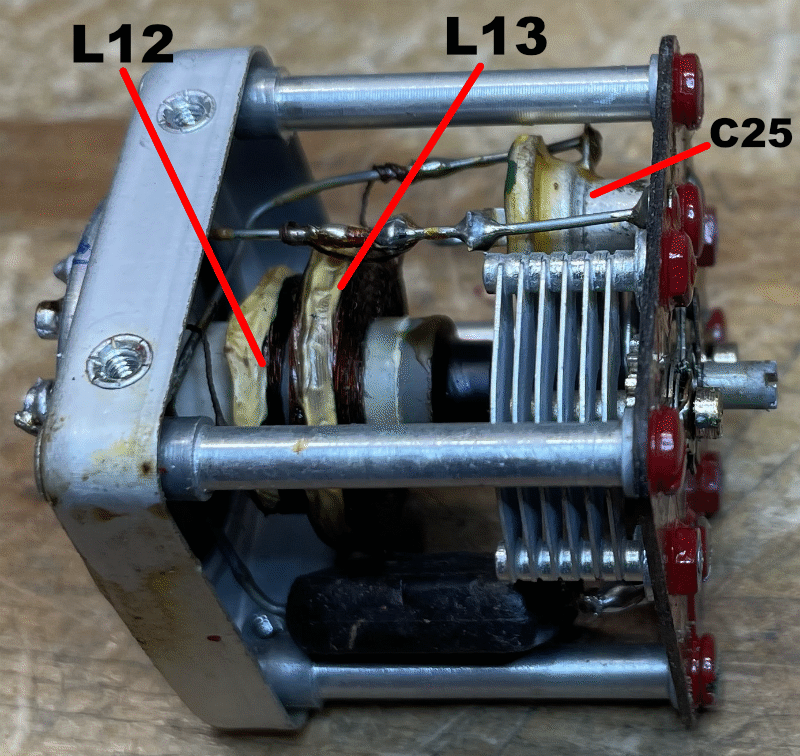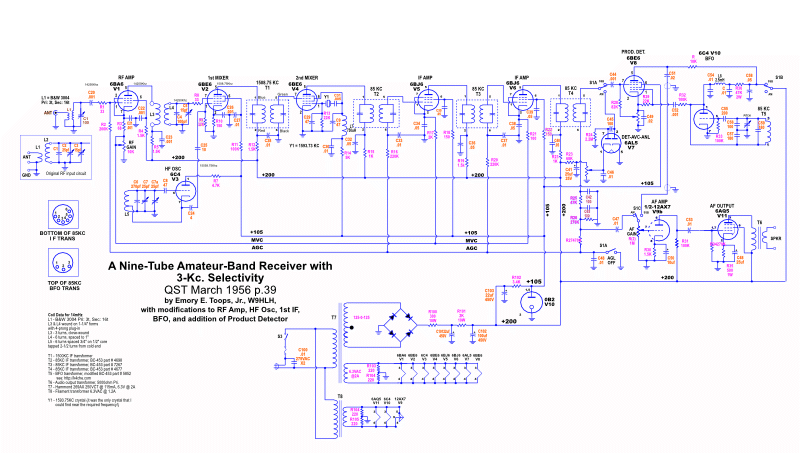Homebrew Receiver Page

For me, a formidable Challenge!
July 2024
I have avoided building more complex radios for a long time, and instead have made a number of the more simple regenerative radios. It has been a combination of lack of confidence, as I have had little experience with IF circuits, and a lack of the required components necessary to build such complex radios.
Earlier this year I tried my hand at building a copy of the the classic All American 5 (AA5) broadcast band radio, a superhet with a couple of IF stages. Finding the necessary IF transformers suitable for vacuum tube circuits was a little difficult and a little expensive, since they are not produced anymore. But I found a couple, built the radio and managed to get it working. This was a confidence boost.
Always looking for a challenge, I started looking for a workable plan for a real communications receiver, one with double conversion and that could actually be used on the air. The recurring problem of finding suitable components raised its ugly head again. Again, finding IF transforms was the biggest challenge.
I searched through old issues of QST magazine (thanks to the World Radio History website) and found a number of aticles on building a communications receivers, but many required parts not produced anymore and very difficult if not impossible to find.
A March 1956 article by Emory E. Toops, Jr., W9HLH, seemed like a doable project as it used IF transformers from the WWII command receivers that are still floating around, many of which have been modified and are not contenders for restoration. The remainder of the required parts were obtainable or I had on hand, I began construction.
The schematic below is the latest of a series of changes (and hopefully,improvements) over the original circuit. It has evolved for several reasons, including difficulty in find some components, replacement of some circuits that didn't perform as expected, and additional capability, such as the product detector for SSB signals (which only works after a fashion, so more improvements are necessary). The circuit uses the 85Khz IF transformers from the BC-453 command receiver, as well as the BFO coil.
More explanation and information will be forthcoming...

-----------------------------------
BFO
Finding an inductor for the low frequency BFO can be a problem. However, Mr. B Smith's - K4CHE - website on Military Radio and Boat Anchors was a very big help. Use the link for the HBR-14 Receiver Construction for many useful tips, including how to modify the BC-453 Command Receiver BFO coil for use in a relatively simple BFO circuit.
The modifications to the BFO coil from the BC-453 is explained in detail. Here is a photo of the coil/capacitor assembly with the shield removed:

Something I wish I had done that that Mr. B. Smith recommended, is to build the BFO first (in a shield) and construct the rest of the radio around it. As a result, I ended up with a less than ideal chassis layout. I built the power supply and audio section first, which is often recommended so that the radio is created backwards and each subsequent section can be tested before moving on.

